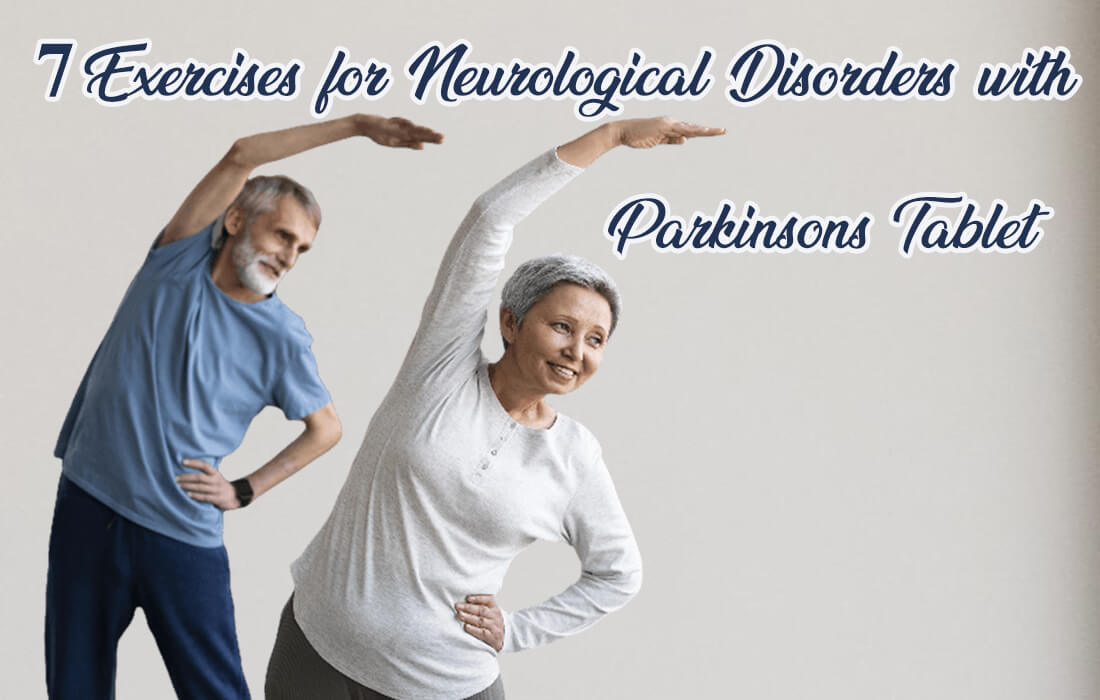
A significant number of individuals have Parkinson’s disease, which is a neurodegenerative condition. Symptoms of the disorder can fluctuate between individuals, but a prevalent issue involves difficulties with both mobility and stability. Parkinson’s patients often struggle with balance and coordination, making it difficult to perform everyday activities. However, there is hope for those struggling with this disease. Within this blog post, we’ll explore seven essential exercises for enhancing balance and parkinsons tablet that can help improve the overall balance of Parkinson’s patients. These exercises aim to address distinct muscle groups while improving balance and coordination, ultimately helping patients sustain their self-reliance and overall quality of life. So, let’s dive in and learn how to overcome this condition.
7 Essential Balance Exercises to Manage Parkinson
Exercise is vital for individuals living with Parkinson’s disease (PD), as it can improve mobility, strength, balance, flexibility, coordination, posture, mood, cognition, sleep, energy levels, as well as overall quality of life. A variety of specific balance exercises can be implemented to improve balance for those living with PD.
Here are seven essential balance exercises for Parkinson’s patients:
1. Weight Shifts:
Stand with your feet shoulder-width apart. Shift your body weight gently from one foot to the other, rocking back and forth slowly. Start with small changes and gradually increase the range of motion. Repeat for 10 to 15 repetitions.
2. Single Leg Stance:
Stand behind a sturdy chair or use a wall for support. Lift one leg off the ground and balance on the other leg. Hold this position for as long as possible, aiming for 30 seconds to one minute. Repeat on the other leg.
3. Heel-to-Toe Walk:
Find a straight line on the floor or use tape to create one. Take one foot’s heel and align it in front of the toes of the other foot, making the appearance of walking on a tightrope. Take slow, deliberate steps, maintaining the heel-to-toe pattern. Repeat for a distance of 10 to 15 steps.
4. Tandem Stance:
Position one foot in front of the other, aligning the heel of the front foot with the toe of the back foot. Keep your eyes focused on a fixed point in front of you. Hold this position for as long as possible, aiming for 30 seconds to one minute. Switch the position of your feet and repeat.
5. Standing Leg Swings:
Stand behind a chair or hold onto a stable surface for support. Swing one leg forward and backwards, maintaining control and balance. Repeat for 10 to 15 swings on each leg. You can also do side-to-side leg swings for additional challenges.
6. Yoga Tree Pose:
Stand tall with your feet together. Place your weight on a single leg while resting the sole of your opposite foot on the inner thigh of the standing leg. Bring your hands together in front of your chest in a prayer position. Keep this stance for 30 seconds to a minute before shifting to the other leg.
7. Tai Chi:
Consider enrolling in a Tai Chi class designed for individuals with Parkinson’s disease. Tai Chi exercises incorporate slow, flowing movements promoting balance, flexibility, and awareness of mind-body.
By incorporating these exercises and medicine for nerve strength into their daily routine, individuals with parkinson can experience better control over their movements. Overall, balance exercises offer a safe, effective, low-cost way to manage the symptoms of Parkinsons.
The Benefits of Exercises for Parkinson’s Patients
Parkinson’s disease can cause several motor symptoms and complications, such as gait and balance issues and tremors, that can greatly impact a patient’s daily life and ability to function and move comfortably. Thus, regular exercise can help manage the symptoms of Parkinson’s disease and offers a range of benefits for patients. Here are some of the key benefits of exercise for individuals with Parkinson’s:
- Improved Balance and Stability: Parkinson’s disease often affects balance and coordination. Regular exercise, particularly balance-focused exercises, can help improve stability and reduce the risk of falls.
- Increased Strength and Flexibility: Parkinson’s can cause muscle stiffness and weakness. Exercise helps to maintain and improve muscle strength and flexibility, enhancing overall mobility and reducing the risk of muscle imbalances and joint problems.
- Enhanced Motor Function: Physical activity is beneficial for preserving and enhancing motor function in people with Parkinson’s disease. It can assist in controlling movements, reducing rigidity, and improving fine motor skills.
- Reduced Symptoms: Physical activity has been shown to alleviate Parkinson’s symptoms, including tremors, bradykinesia (slowness of movement), and rigidity. Physical activity triggers the release of dopamine, a neurotransmitter often reduced in Parkinson’s disease, which can alleviate symptoms.
- Increased Cardiovascular Health: Regular aerobic exercise, such as walking, swimming, or cycling, can improve cardiovascular fitness and endurance. It benefits overall health and helps individuals better cope with the demands of daily activities.
- Improved Mood: Exercise positively affects mental health by reducing anxiety, depression, and stress. It promotes the release of endorphins, which are natural mood-boosting chemicals in the brain. Regular physical activity can contribute to a better overall quality of life for Parkinson’s patients.
- Neuroprotective Effects: Exercise may have neuroprotective effects by promoting brain health and potentially slowing the progression of Parkinson’s disease. Exercise stimulates the brain’s plasticity and neurogenesis, supporting new neural connections.
Tips for Optimizing Results from Balance Exercises for Parkinson’s Disease
- Consistency is Key: Regularity is essential for reaping the benefits of balance exercises. Aim for a consistent exercise routine, ideally incorporating balance exercises and parkinsons tablet into your daily or weekly schedule.
- Gradual Progression: Start with exercises that are suitable for your current level of balance and gradually increase the difficulty over time. Begin with simple exercises and slowly progress to more challenging ones as your balance improves.
- Focus on Core Strength: A strong core provides a stable foundation for balance. Incorporate workouts focusing on your core muscles, like planks, abdominal crunches, and back extensions, to bolster your overall stability and posture.
- Stay Hydrated: Adequate hydration is vital in enhancing overall physical performance. Drink water before, during, and after exercise to maintain hydration levels.
- Be Patient: Balance improvement takes time and effort. Be kind to yourself and sustain a hopeful perspective. Consistency and persistence in your exercise routine will yield gradual progress over time.
Conclusion
Improving the mobility and stability of Parkinson’s patients can be a long and challenging process. However, integrating these crucial balance exercises into your daily regimen can substantially enhance your mobility and coordination. The focus on targeting specific muscle groups and improving coordination and balance will help you maintain your independence and quality of life, allowing you to continue performing everyday activities easily. Remember to take your time, stay focused, exercise regularly, and consume necessary parkinson’s disease tablets. With dedication and consistency, you can enjoy a higher quality of life despite the challenges of Parkinson’s disease.










